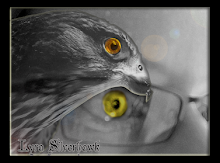
Wiccans like to celebrate. The Wiccan calendar contains 13 full moons (Esbats) and 8 Sabbats, or days of power, making 21 Wiccan ritual occasions. (Note: The dates listed are for the Northern Hemisphere. See below for the Southern Hemisphere.)
The Esbats are for celebrating the Goddess. The Sabbats mark the sun's yearly cycle and tell the story of The Wheel of the Year. (Clicking on the links will take you to rituals for that Sabbat.)
Our story begins on the Winter Solstice, the shortest day of the year, (usually around Dec. 21) also known as Yule. It is on this day that we celebrate the Goddess giving birth to the God, a reminder that with death comes rebirth. It is a joyous celebration of family and friends, of peache and love and positive energy. Wiccans light candles and/or fire (the Yule log) to welcome the Sun's return. It is common for this ritual to be performed just before dawn, ending with the sun's rising. It is tradition to save part of the Yule log for use the next year and to bring luck into your home during the coming year.
Imbolic falls on Feb. 2. During this Sabbat, we celebrate the Goddess's recovery from giving birth and the God's growth as the days begin to get longer. It is the quickening of the year. This is the Festival of Light and Fertilization - sacred to the Irish goddess Brigit - a traditional time for purification, initiation and self-dedication. Also referred to as Imbolg, Imbolc, Candlemas and Brigid.
Ostara, the Spring Equinox (when the day and night are equal, usually around March 21), is also known as The Rites of Spring. This is when the God is flourishing in youth and the Goddess (in her Maiden aspect) blankets the earth in fertility. This is where their courtship begins. Ostra is a solar festival of fire, light and fertility. Eggs are a popular symbol of this holiday. This is a time of beginnings and of actions and for planting spells for future gain. It is also a time to bless seeds that will be planted in the garden. Also referred to as Ostra, Ostre and Eostar.
Beltane (May 1) marks the emergence of the God into manhood. It is the great fertility festival where we celebrate the marriage of the Goddess and the God and the consummation of their relationship. This festival celebrates the transformation of from maiden to mother through the mystery of sexuality. The Goddess's fertility is celebrated, usually with the May Pole and Beltane Eve is the perfect time for the Great Rite. Also spelled Bealteinne, Beltaine, Beltainne.
Litha, the Summer Solstice (around June 21) marks the longest day of the year, when powers in nature reach their highest point. The Earth is awash with the fertility of the pregnant Goddess, and the God is at the height of his power. Fire is lit to mark the longest day. It is a great time for handfastings, workings of empowerment, consummation, culmination and magick. Also referred to as Midsummer.
Lughnasad (Aug. 1) is the festival of the first harvest. The God is losing strength and is dying. The Goddess is sad as she watches him die, yet is happy as she knows that he lives on inside of her as her child. This is a reminder that nothing in the Universe is constant. It is usually marked with the Festival of Bread and a corn king is sacrificed. Also spelled Lughnassad and referred to as Lammas.
Mabon, the Fall Equinox (around Sept. 21) is the completion of the harvest begun at Lughnasad. Day and night are equal. It is at this time that the God prepares to leave his body for rebirth. It is a time to enjoy the fruits of your labor and give thanks for abundance.
Samhain (Sow-win, Oct. 31), Witches' New Year, marks the death of the God and his the arrival in the Land of Youth, where he opens the gates so the souls can revisit their loved ones. It is said to be the day when the walls between the worlds are to be the thinnest and when contact with one's ancestors can tack place. It is celebrated with the Festival of the Dead. This is a time of reflection on the year and a celebration of our ancestors.
The Southern Hemisphere:
As an earth religion we follow the earth and its cycles, maintained directly by the sun and its positions. We celebrate those cycles, coupled to events like the planting and harvest, by having our Sabbats. These cycles differ in the northern and the southern hemisphere, as when it's winter in places like England or Canada it's summer in New Zealand and Australia.
For our fellow practicing Southern hemisphere located witches and pagans, we have acquired the rough dates for the Sabbats (the dates may vary a little each year as the sun has a slightly different position every time).
Samhain: April 30th
Yule: June 21st
Imbolc: August 2nd
Ostara: September 21 st
Beltane: Octubre 31st
Midsummer: December 21st
Lamas or Lughnassadh: February 2nd
Mabon or Autumnal Equinox: March 21st
- Thanks to LunaSaidar for the Southern info!
*From Bewitching Ways*

